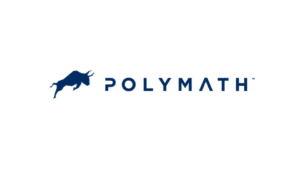Supply chain finance (SCF) is a critical component of global trade, helping businesses manage their cash flow and reduce the risk of financial instability. However, traditional supply chain finance processes often suffer from inefficiencies, lack of transparency, and trust issues among stakeholders. Blockchain technology has emerged as a powerful solution to these challenges, offering a decentralized and secure way to enhance transparency, efficiency, and trust in supply chain finance. This article explores the role of blockchain in transforming supply chain finance, highlighting its benefits and potential applications.
Understanding Supply Chain Finance
What is Supply Chain Finance?
Supply chain finance refers to a set of financial practices and solutions aimed at optimizing the management of cash flow, working capital, and trade-related expenses for businesses involved in the supply chain. It includes various financing methods such as invoice discounting, factoring, reverse factoring, and trade credit. These methods help suppliers receive early payments for their goods and services while allowing buyers to extend their payment terms.
Challenges in Traditional Supply Chain Finance
Traditional supply chain finance is often plagued by several challenges, including:
Lack of Transparency:
Information asymmetry among supply chain participants can lead to mistrust and inefficiencies.
Manual Processes:
Paper-based documentation and manual verification processes are time-consuming and prone to errors.
Limited Access to Financing:
Small and medium-sized enterprises (SMEs) often face difficulties in accessing financing due to a lack of credit history and collateral.
High Costs:
Intermediaries and administrative costs increase the overall cost of financing.
Fraud and Counterfeiting:
The risk of fraud and counterfeit documents undermines trust among stakeholders.
How Blockchain Enhances Supply Chain Finance
What is Blockchain?
Blockchain is a decentralized and distributed ledger technology that records transactions across multiple computers in a way that ensures data integrity and security. Each transaction is grouped into a block, which is then linked to the previous block, forming a chain of blocks. This structure makes it nearly impossible to alter or tamper with the recorded data.
Key Features of Blockchain in Supply Chain Finance
Transparency: Blockchain provides a transparent and immutable record of all transactions, allowing all participants to view and verify the data. This transparency reduces information asymmetry and builds trust among stakeholders.
Efficiency:
Blockchain automates and streamlines processes through smart contracts, reducing the need for intermediaries and manual verification. This leads to faster transaction processing and lower administrative costs.
Security:
Blockchain’s cryptographic algorithms ensure the security and integrity of data, making it resistant to fraud and tampering.
Traceability: Blockchain enables end-to-end traceability of goods and financial transactions, allowing participants to track the movement of goods and payments in real time.
Accessibility:
Blockchain can provide SMEs with greater access to financing by creating a transparent credit history based on transaction records, reducing the need for traditional credit assessments.
Applications of Blockchain in Supply Chain Finance
Invoice Financing
Invoice financing is a common practice in supply chain finance where suppliers sell their unpaid invoices to a financier at a discount to receive early payment. Blockchain can enhance this process by providing a transparent and immutable record of invoices, reducing the risk of fraud and duplicate financing. Smart contracts can automate the verification and payment process, ensuring timely and accurate payments.
Trade Finance
Trade finance involves various financial instruments and products that facilitate international trade. Blockchain can streamline trade finance by digitizing and automating the issuance and verification of trade documents such as letters of credit and bills of lading. Furthermore, This reduces the reliance on paper-based documentation and minimizes the risk of errors and fraud. Additionally, blockchain’s transparency can enhance compliance with regulatory requirements and reduce the risk of money laundering and trade-based financial crimes.
Supply Chain Visibility
Blockchain enables end-to-end visibility of the supply chain, allowing all participants to track the movement of goods and payments in real time. This visibility enhances inventory management, reduces the risk of stockouts and overstocking, and improves overall supply chain efficiency. Moreover, blockchain’s traceability can help identify and address issues such as delays, quality problems, and counterfeit goods.
Dynamic Discounting
Dynamic discounting is a financing method where buyers offer early payment to suppliers in exchange for a discount on the invoice amount. Blockchain can facilitate dynamic discounting by providing a transparent and real-time view of invoices and payment terms. Smart contracts can automatically calculate and apply discounts based on predefined rules, ensuring accurate and timely payments.
Supplier Financing
Supplier financing involves providing financing to suppliers based on their receivables. Blockchain can enhance supplier financing by creating a transparent and secure record of receivables, reducing the risk of fraud and duplicate financing. This transparency can also help suppliers access financing at lower costs by improving their creditworthiness.
Benefits of Blockchain in Supply Chain Finance
Improved Trust and Collaboration
Blockchain’s transparency and immutability build trust among supply chain participants, fostering better collaboration and cooperation. This trust can lead to more favorable financing terms and stronger business relationships.
Reduced Costs
By automating and streamlining processes, blockchain reduces the need for intermediaries and manual verification, leading to lower administrative and transaction costs. This cost reduction benefits both buyers and suppliers, improving overall supply chain efficiency.
Enhanced Security
Blockchain’s cryptographic algorithms ensure the security and integrity of data, reducing the risk of fraud, tampering, and data breaches. This enhanced security is crucial for maintaining the trust and confidence of supply chain participants.
Greater Access to Financing
Blockchain can provide SMEs with greater access to financing by creating a transparent credit history based on transaction records. Furthermore, This transparency reduces the need for traditional credit assessments and collateral, making it easier for SMEs to obtain financing.
Real-time Visibility and Traceability
Blockchain enables real-time visibility and traceability of goods and financial transactions, allowing supply chain participants to track the movement of goods and payments with accuracy. This visibility improves inventory management, reduces the risk of stockouts and overstocking, and enhances overall supply chain efficiency.
Compliance and Regulatory Benefits
Blockchain’s transparency and traceability can help businesses comply with regulatory requirements and reduce the risk of money laundering and trade-based financial crimes. Additionally, This compliance is crucial for maintaining the integrity and reputation of supply chain finance operations.
Challenges and Future Outlook
Challenges of Implementing Blockchain
Despite its numerous benefits, implementing blockchain in supply chain finance is not without challenges. These challenges include:
Technical Complexity:
Blockchain technology is complex and requires specialized knowledge and expertise to implement and maintain.
Integration with Legacy Systems:
Integrating blockchain with existing legacy systems can be challenging and may require significant investments in technology and infrastructure.
Regulatory and Legal Issues:
The regulatory and legal framework for blockchain is still evolving, and businesses must navigate various compliance requirements and legal uncertainties.
Scalability:
Blockchain’s scalability is a concern, as the technology may struggle to handle a large volume of transactions in real time.
Future Outlook
Despite these challenges, the future of blockchain in supply chain finance looks promising. As technology continues to evolve and mature, businesses are likely to see more widespread adoption of blockchain solutions. Collaboration between industry stakeholders, technology providers, and regulatory authorities will be crucial in addressing the challenges and unlocking the full potential of blockchain in supply chain finance.
Conclusion
Blockchain technology has the potential to revolutionize supply chain finance by enhancing transparency, efficiency, and trust among participants. Its key features, including transparency, efficiency, security, traceability, and accessibility, address many of the challenges faced by traditional supply chain finance processes. However, while there are challenges to implementation, the benefits of blockchain make it a promising solution for the future of supply chain finance. Thus, By embracing blockchain, businesses can improve their financial stability, reduce costs, and build stronger relationships with their supply chain partners, ultimately driving growth and success in the global marketplace.



































